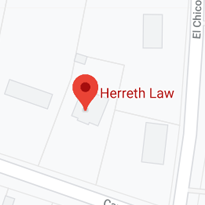 A fatal accident on westbound Interstate 20 illustrates two commonly-used insurance company defenses in car wreck claims.
A fatal accident on westbound Interstate 20 illustrates two commonly-used insurance company defenses in car wreck claims.
The wreck occurred near the Campus Drive exit. According to police, a blue car was stalled in a traffic lane. The car did not have its lights on. As officers we en route to assist the stranded motorist, they saw another vehicle rear-end the stalled car. The wreckage quickly erupted into a fireball, and by the time responders arrived, the vehicle was completely engulfed in flames. The female stalled motorist was declared dead at the scene; the other motorist sustained some injuries.
None of the names were released.
Sudden Emergency
This legal doctrine often comes up in rear-end crash claims. If it applies, the sudden emergency rule forgives negligent conduct, like rear-ending another vehicle. But this doctrine has limited applicability. The two prongs are:
-
Reasonable reaction to
-
A sudden emergency.
Generally, that first element is present. After a crash, most drivers react reasonably. They remain at the scene and wait for emergency responders. The second prong, however, is a different story. Generally, stalled cars, large potholes, jaywalking pedestrians, and other everyday hazards are not “sudden emergencies.” Drivers should anticipate these hazards and be ready to deal with them.
The insurance company usually has the burden of proof to establish sudden emergency and other affirmative defenses.
Contributory Negligence
In many crashes, both parties are arguably at fault. In the above story, the stalled motorist should have activated hazard flashers to warn drivers. The other driver should have been on the lookout for stalled cars.
That being said, the victim’s responsibility was probably quite limited. Even if the vehicle did not have its hazard flashers on, oncoming drivers should have seen the vehicle, especially since the rear lights are also reflectors, and avoided it. Indeed, it’s quite possible that other motorists had successfully avoided the stalled car.
With such little evidence of contributory fault, a Fort Worth personal injury attorney may be able to prevent the insurance company from using this defense. If it does go before a jury, Texas is a modified comparative fault state with a 51 percent bar. So, even if the victim was 49 percent responsible for the crash, the victim still receives a proportionate share of damages.
Insurance companies have some tricks up their sleeves in car crash claims. For a free consultation with an experienced personal injury attorney in Fort Worth, contact Herreth Law. Home and hospital visits are available.

